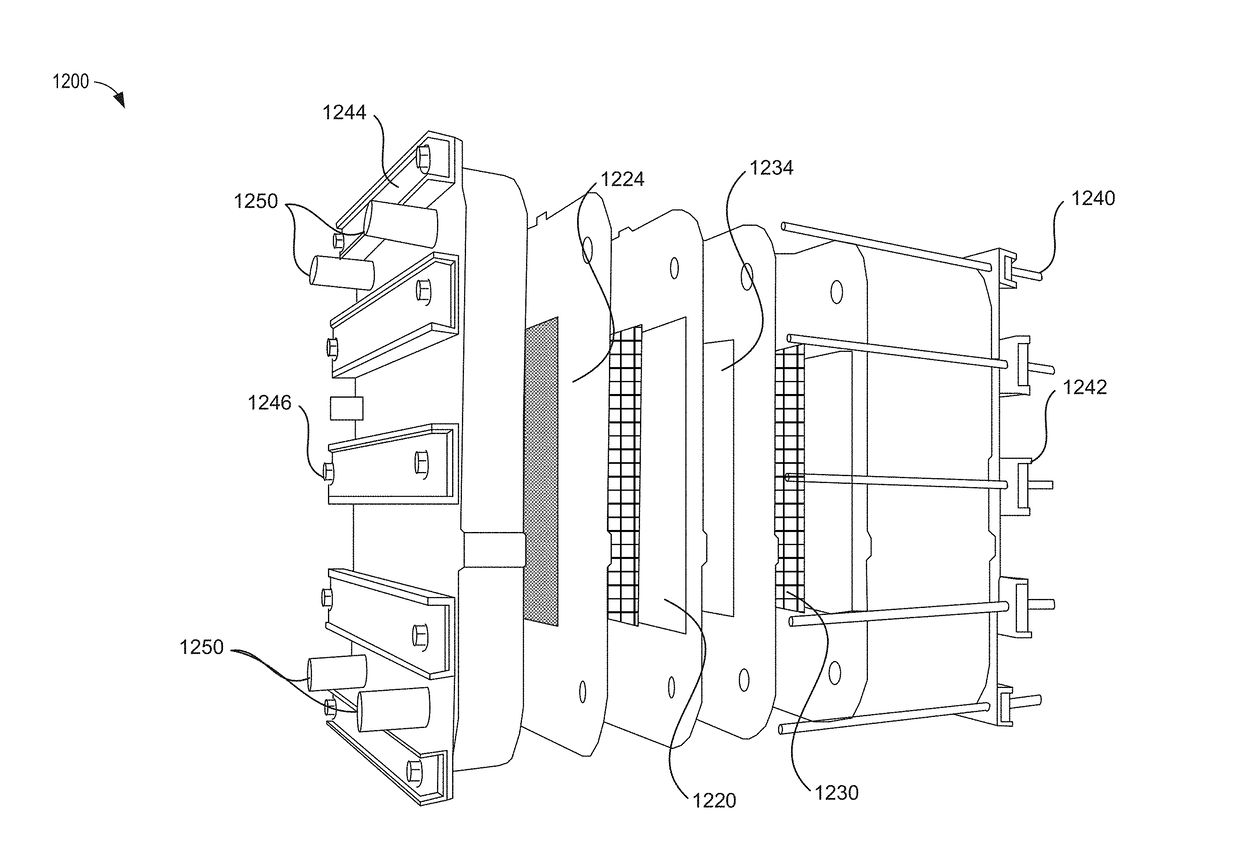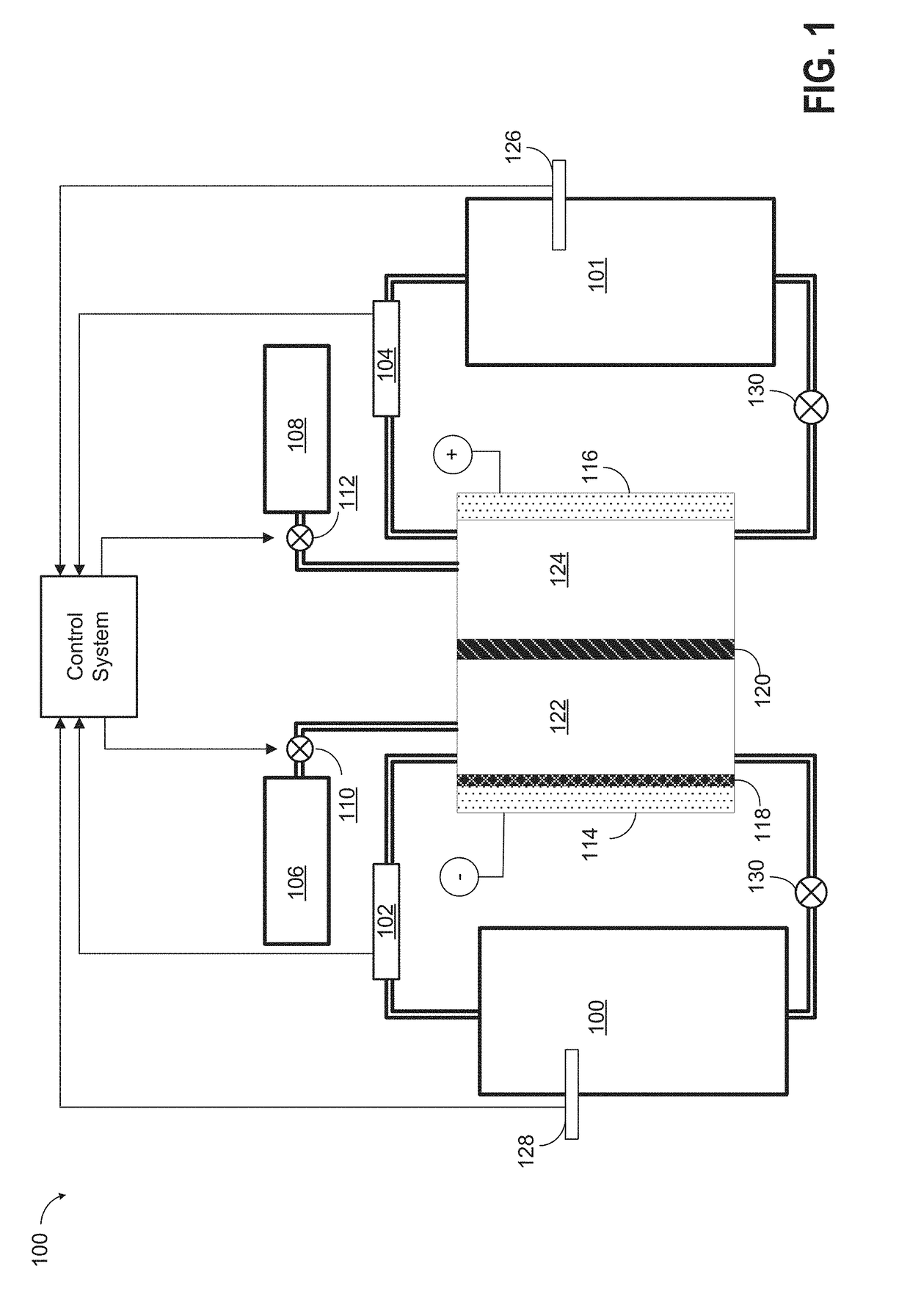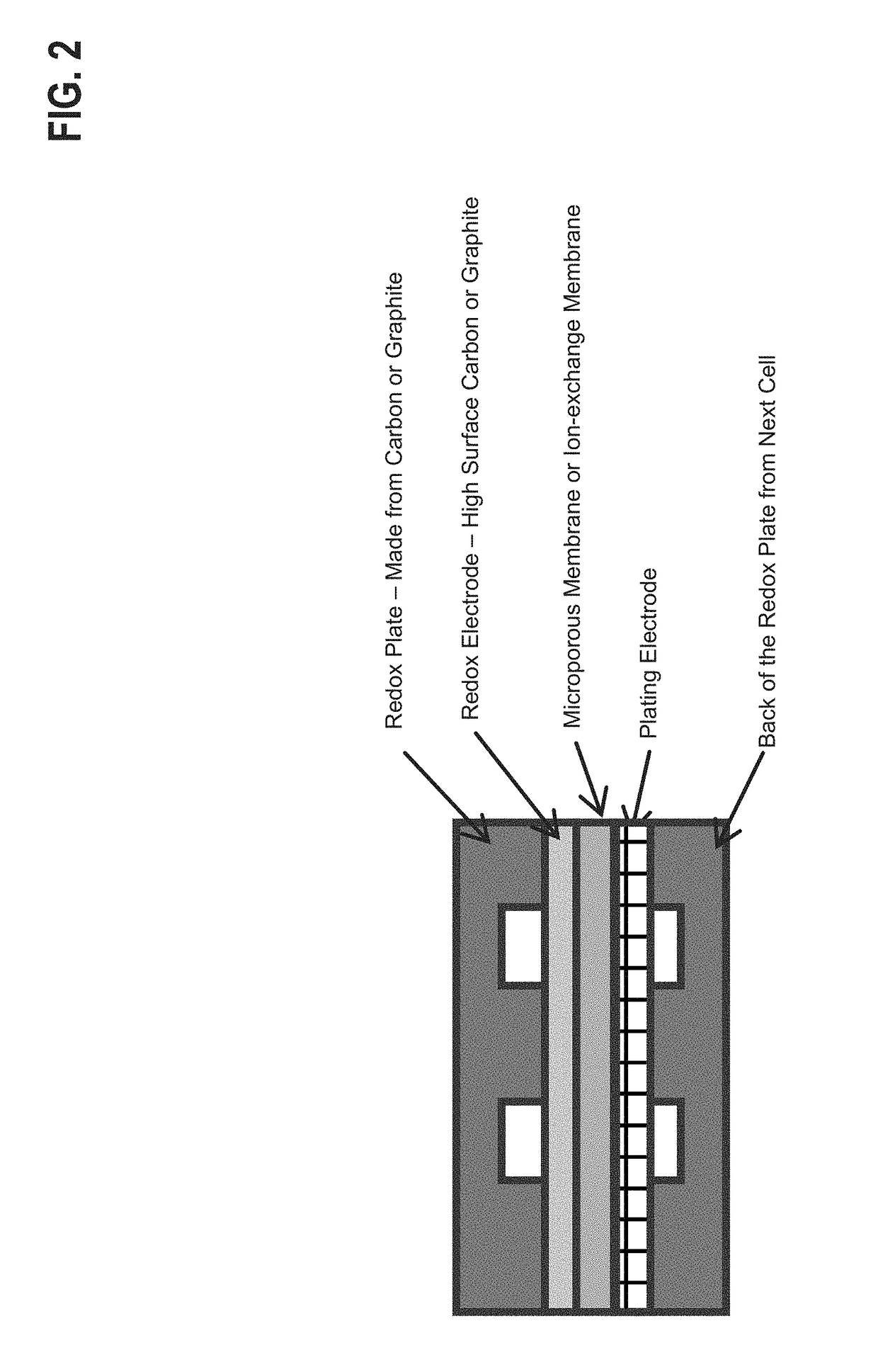Electrolytes for iron flow battery
- Summary
- Abstract
- Description
- Claims
- Application Information
AI Technical Summary
Benefits of technology
Problems solved by technology
Method used
Image
Examples
Embodiment Construction
[0029]As discussed above, the plating electrolyte used in the all iron redox flow battery (IFB) may provide a sufficient amount of Fe2+ so that, during charge, it can accept two electrons from the negative electrode to form Fe0 and solidify onto a substrate. During discharge, the solidified Fe0 may then lose two electrons, ionizing into Fe2+ and be dissolved back into the electrolyte. The equilibrium potential of the above reaction is −0.44V and thus this reaction provides a negative terminal for the desired system. On the positive side of the IFB, the electrolyte may provide Fe2+ during charge which loses electron and oxidizes to Fe3+. During discharge, Fe3+ provided by the electrolyte becomes Fe2+ by absorbing an electron provided by the electrode. The equilibrium potential of this reaction is +0.77V, creating a more positive terminal for the desired system.
[0030]The IFB provides the ability to charge and recharge its electrolytes in contrast to other battery types utilizing non-r...
PUM
 Login to View More
Login to View More Abstract
Description
Claims
Application Information
 Login to View More
Login to View More - R&D
- Intellectual Property
- Life Sciences
- Materials
- Tech Scout
- Unparalleled Data Quality
- Higher Quality Content
- 60% Fewer Hallucinations
Browse by: Latest US Patents, China's latest patents, Technical Efficacy Thesaurus, Application Domain, Technology Topic, Popular Technical Reports.
© 2025 PatSnap. All rights reserved.Legal|Privacy policy|Modern Slavery Act Transparency Statement|Sitemap|About US| Contact US: help@patsnap.com



